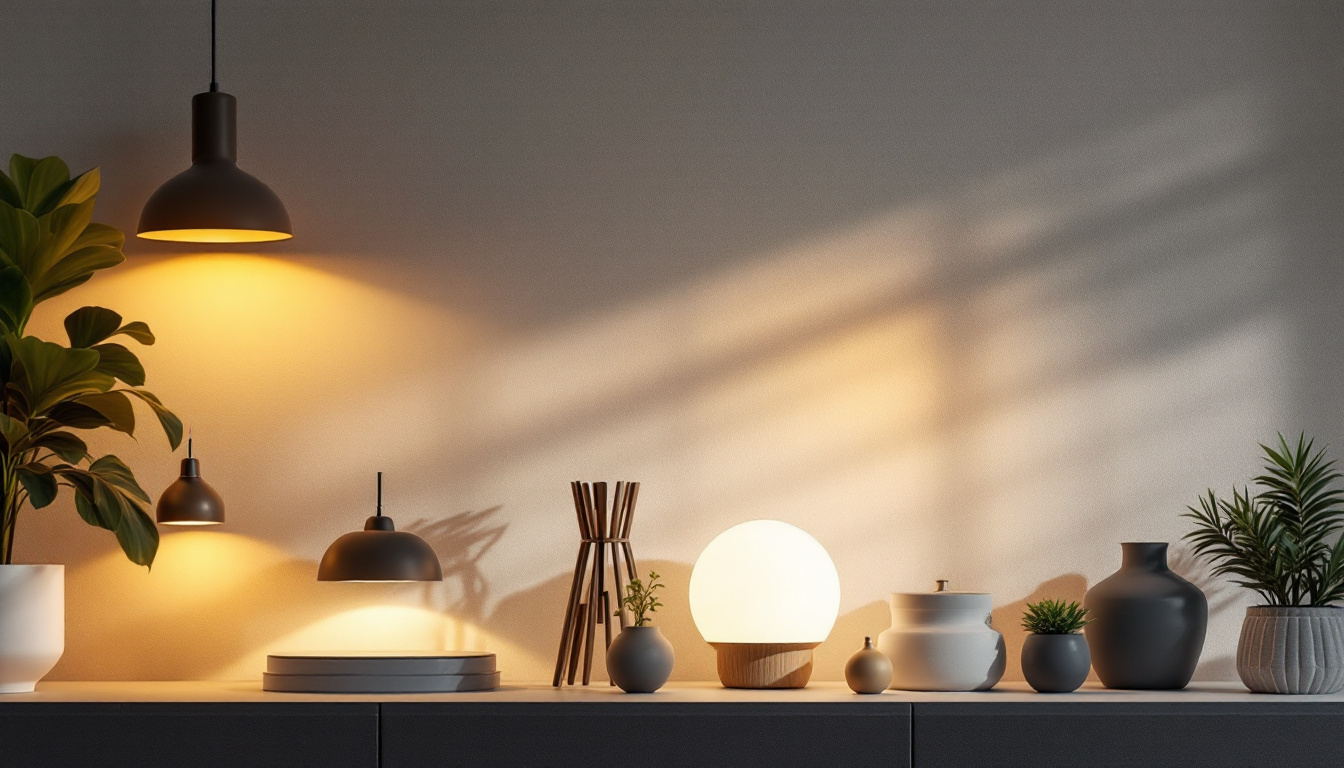
Lighting plays a crucial role in creating ambiance and functionality in both residential and commercial spaces. As lighting contractors, understanding the nuances of dimmer switches and LED lights is essential for delivering optimal solutions to clients. This guide will explore the key considerations when selecting dimmer switches and LED lights, ensuring that lighting professionals can make informed decisions that enhance their projects.
Dimmer switches are devices that allow users to adjust the brightness of their lighting fixtures. They offer a range of benefits, from energy savings to creating the desired atmosphere in a room. However, not all dimmer switches are created equal, and selecting the right one can significantly impact the performance of LED lights.
There are several types of dimmer switches available on the market, each designed for specific applications. The most common types include:
One of the most critical factors to consider when selecting a dimmer switch is its compatibility with LED lights. Many older dimmers may not work effectively with LED technology, leading to flickering, buzzing, or even complete failure to dim. It is essential to choose dimmers specifically designed for LED use, as they have features that accommodate the lower wattage and different electrical characteristics of LED lights. Additionally, some LED bulbs come with built-in dimming capabilities, but they may still require a compatible dimmer to function correctly. When in doubt, consulting the manufacturer’s specifications can help ensure a harmonious pairing of dimmer and bulb.
When selecting a dimmer switch, it’s vital to consider the load capacity. Each dimmer has a maximum wattage rating, which should not be exceeded to prevent overheating and potential failure. Additionally, consider the total load on the circuit. If multiple dimmers or fixtures are connected to the same circuit, ensure that the combined wattage does not exceed the circuit’s capacity. This is particularly important in older homes where electrical systems may not be equipped to handle modern lighting loads. Moreover, it’s advisable to consult with an electrician if you’re unsure about the load calculations or if you’re planning to install multiple dimmers on a single circuit, as they can provide guidance on the best practices to ensure safety and functionality.
Installing a dimmer switch can be a straightforward DIY project, but it requires careful attention to detail to ensure safety and proper function. Before starting, always turn off the power at the circuit breaker to avoid any electrical hazards. Familiarize yourself with the wiring of your existing switch, as dimmers may have different wiring configurations. It’s also beneficial to use a voltage tester to confirm that the power is off. If you’re replacing a standard switch, you may find that the wiring is color-coded, which can help simplify the installation process. Additionally, consider using wire nuts to secure connections and electrical tape to cover any exposed wires for added safety. If you’re not comfortable with electrical work, hiring a professional electrician can save time and ensure that the installation adheres to local codes.
LED lights have revolutionized the lighting industry due to their energy efficiency, longevity, and versatility. However, selecting the right LED lights involves understanding various factors that can affect performance and aesthetics.
Color temperature, measured in Kelvin (K), plays a significant role in how a space feels. Warmer temperatures (2700K-3000K) create a cozy atmosphere, while cooler temperatures (4000K-5000K) are more energizing and suitable for task lighting. Additionally, the Color Rendering Index (CRI) measures how accurately a light source displays colors. A higher CRI (above 80) is ideal for spaces where color accuracy is essential, such as art studios or retail environments. Understanding the nuances of color temperature can also enhance mood and productivity; for instance, cooler lights are often preferred in workspaces to promote alertness, while warmer lights are favored in homes for relaxation.
When selecting LED lights, it is crucial to understand the relationship between wattage and lumens. Unlike traditional bulbs, which are rated by wattage, LED lights are rated by lumens, which measure brightness. A higher lumen output indicates a brighter light, while lower wattage means greater energy efficiency. Contractors should educate clients on the importance of lumens when selecting LED lights to ensure they achieve the desired brightness without excessive energy consumption. Additionally, it’s worth noting that different applications may require varying lumen levels; for example, a cozy living room might only need around 1000-2000 lumens, while a kitchen or workspace could require upwards of 3000 lumens for optimal visibility.
The beam angle of an LED light determines how concentrated or dispersed the light will be. A narrow beam angle (less than 30 degrees) is suitable for spotlighting, while a wider angle (over 60 degrees) is better for ambient lighting. Additionally, contractors should consider the compatibility of LED lights with existing fixtures. Some fixtures may not accommodate certain types of LED bulbs, leading to installation challenges and performance issues. Furthermore, the choice of beam angle can significantly influence the overall ambiance of a room; for instance, using a narrow beam to highlight artwork can create a dramatic effect, while a broader beam can help fill a space with soft, even light, enhancing the overall comfort of the environment.
Successfully integrating dimmer switches with LED lights requires careful planning and execution. This section will discuss best practices for ensuring compatibility and optimal performance.
Before finalizing a project, it is essential to test the combination of dimmer switches and LED lights. This testing phase helps identify any compatibility issues, such as flickering or buzzing, that may arise. Contractors should also validate the dimming range to ensure that clients can achieve the desired brightness levels without compromising performance. Additionally, it’s beneficial to conduct tests in various lighting scenarios, such as different times of day or in conjunction with other light sources, to ensure the system performs consistently under all conditions. This thorough approach not only enhances the reliability of the installation but also builds trust with clients, who appreciate the attention to detail.
Educating clients about the benefits and limitations of dimmer switches and LED lights is crucial for ensuring satisfaction. Clients should be informed about the importance of selecting compatible products, the potential for dimming issues, and how to operate their new lighting system effectively. Providing clear instructions and resources can help clients feel more confident in their choices. Furthermore, offering demonstrations on how to adjust the settings and explaining the energy efficiency benefits of LED lights can empower clients to utilize their systems to the fullest. This proactive communication fosters a sense of partnership, encouraging clients to reach out with questions or concerns, which can lead to a more positive overall experience.
As technology continues to evolve, it’s wise for contractors to consider future-proofing installations. This involves selecting dimmer switches and LED lights that can accommodate advancements in lighting technology. For instance, smart dimmers that can integrate with home automation systems provide flexibility for future upgrades, ensuring that clients’ lighting systems remain relevant and functional for years to come. Additionally, staying informed about emerging trends, such as tunable white lighting or color-changing LEDs, can help contractors recommend solutions that not only meet current needs but also anticipate future desires. By embracing these innovations, contractors can position themselves as forward-thinking professionals, ready to guide clients through the ever-evolving landscape of lighting technology.
While working with dimmer switches and LED lights, contractors may encounter several challenges. Understanding these common issues and their solutions can streamline the installation process and enhance client satisfaction.
Flickering and buzzing are common problems when using incompatible dimmer switches with LED lights. To resolve this issue, contractors should ensure that both the dimmer and LED lights are compatible. Upgrading to a modern, LED-compatible dimmer can often eliminate these problems. Additionally, using LED lights from reputable manufacturers known for their quality can further reduce the likelihood of these issues.
Another challenge is the limited dimming range that some LED lights may exhibit. This can result in a situation where the lights do not dim as low as desired. To address this, contractors should recommend LED lights specifically designed for dimming applications. These products typically feature better dimming capabilities and a wider range of brightness levels.
Heat management is crucial when working with LED lights and dimmer switches. While LEDs generate less heat than traditional bulbs, improper installation or incompatible dimmers can lead to overheating. Contractors should ensure that fixtures have adequate ventilation and that they are using dimmers rated for the specific load to prevent overheating and prolong the lifespan of the components.
In conclusion, understanding the relationship between dimmer switches and LED lights is vital for lighting contractors aiming to deliver high-quality installations. By considering compatibility, load capacity, and the unique characteristics of both products, contractors can create lighting solutions that meet their clients’ needs while enhancing the overall aesthetic and functionality of a space. Through careful selection, testing, and client education, lighting professionals can navigate the complexities of modern lighting technology and provide exceptional service in their projects.
Ready to elevate your lighting installations with the right dimmer switches and LED lights? Look no further than LumenWholesale for a seamless blend of quality, affordability, and convenience. Our extensive selection of spec-grade lighting products is designed to meet the highest industry standards, ensuring you deliver exceptional service to your clients. With unbeatable wholesale prices and the convenience of free shipping on bulk orders, you can trust LumenWholesale to provide the best value for all your lighting needs. Wholesale Lighting at the Best Value is just a click away. Discover the difference with LumenWholesale today.

Discover essential tips and strategies to prevent costly errors in your lighting projects with LED work lights.

Discover the answers to lighting contractors’ most common questions about 4 feet LED tube lights.

Discover how large outdoor solar lighting can transform your business as a lighting contractor.

Discover the latest in light fixture trends with insights from top lighting contractors.